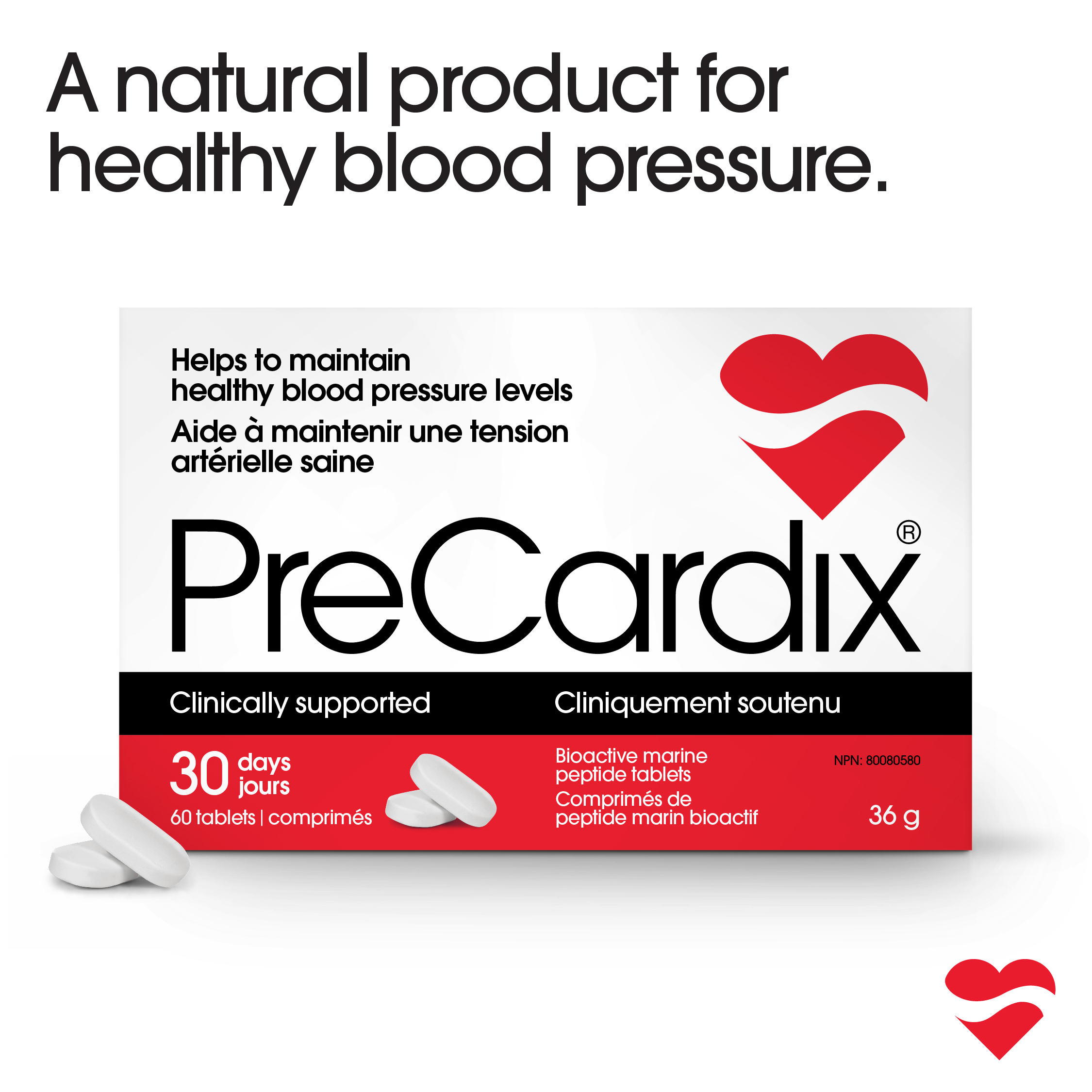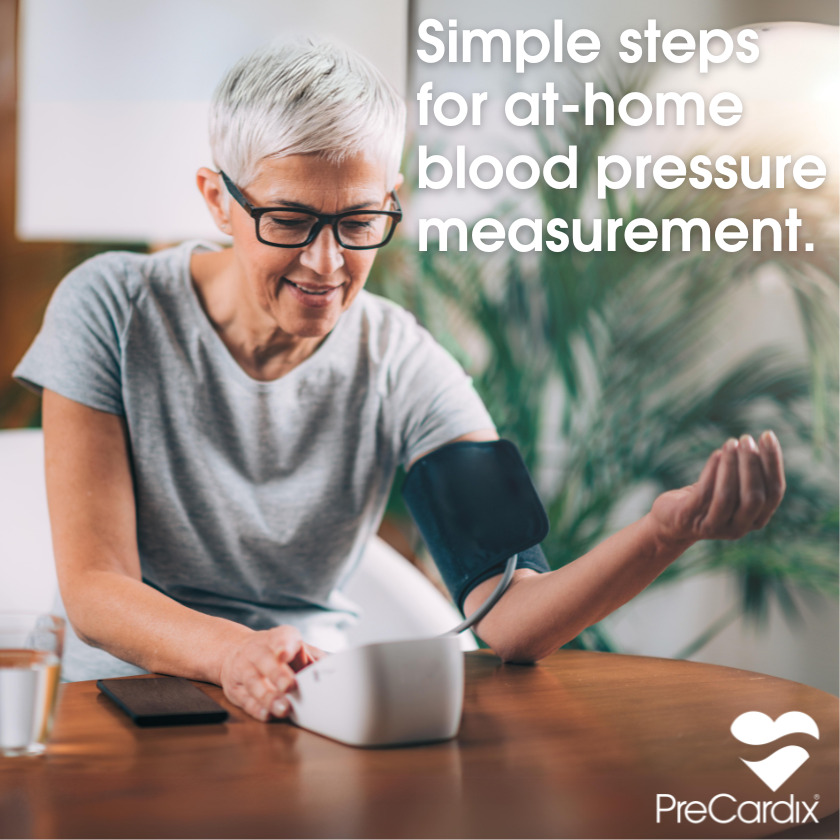Simple Steps For At-Home Blood Pressure Measurement
Proper technique is essential for accurate readings.
By Dr. Liza Klassen, ND | January 2024
Correctly Measure Blood Pressure | Home Blood Pressure Measurement Guidelines | Understanding Blood Pressure Readings
Early identification of high blood pressure is critical. Hypertension is the leading cause of preventable premature death worldwide. Early and effective intervention significantly lowers your risk of having a cardiovascular event like a heart attack or stroke. If you currently have or think you might develop hypertension, regular monitoring helps you and your health care provider evaluate treatment and lifestyle interventions. Measurement also holds you accountable for your treatment plan! The frequency at which you measure your blood pressure is essential, but so is how you measure it. The following simple steps for taking your BP at home ensure your readings are accurate and reliable.
Proper Setup and Device Selection
Ensure that you are using a validated BP device. Hypertension Canada provides a list of recommended devices that have been proven accurate in research studies.
Check that you’re using the appropriate cuff size. Cuff size is vital for achieving an accurate reading! Wrap the cuff around your bare upper arm, about 3cm above your elbow, and secure. The cuff should feel snug (but not tight), and you should be able to fit two fingers between the blood pressure cuff and your arm.
If you’re still unsure the size is correct, use a soft measuring tape to measure your arm’s circumference around the bicep. Record the measurement and select the BP cuff with the range that includes your arm circumference.
Avoid smoking, drinking caffeinated beverages (coffee, tea, cola), drinking alcohol or exercising in the 30 minutes before taking your blood pressure. These activities can artificially elevate your blood pressure leading to inaccurate readings. If you feel anxious or in pain, wait to take your blood pressure until these feelings have passed.
Five minutes before you take your blood pressure, empty your bladder and rest calmly in a seated position without talking. Ensure that you sit comfortably in a chair with your back supported and feet firmly planted on the ground.
Home Blood Pressure Measurement Guidelines
- Follow your blood pressure monitor’s instructions, ensuring the appropriately sized cuff is secure and placed just above your elbow. Always place the cuff in direct contact with your skin, never over clothes.
- Place your arm with the cuff at heart level, preferably resting your arm on a hard surface like a table. Each time you take your blood pressure, make sure to use the same arm. Blood pressure may differ by a few points in each arm; this is normal but will impact your data’s accuracy.
- Follow your monitor’s instructions to take your blood pressure reading.
- Take two separate readings one minute apart, in the morning and evening.
- Record results using this printable (PDF)
- Measure your blood pressure at the same times each day.
Establishing Your Baseline Blood Pressure
If you’re just starting to measure your blood pressure at home, it’s important to calculate your baseline blood pressure. Measure your blood pressure as outlined above twice in the morning and twice in the evening for 7 days in a row. Discard the first day of readings and average the last 6 days. Record in this printable (PDF) or a blood pressure app. Share this information with your health care provider to discuss your baseline blood pressure readings and how to best support your blood pressure health.
How Often Should Blood Pressure Be Measured At Home
Hypertension Canada recommends measuring your blood pressure daily in both the morning and evening if you have hypertension. If you are prehypertensive or have a family history of hypertension, measure blood pressure weekly. If you notice your blood pressure rising, consult with your health care provider.
Interpreting your Readings
According to the Canadian Heart and Stroke Foundation and Hypertension Canada, there are four blood pressure categories*. The first number is your systolic blood pressure. The second number is your diastolic blood pressure.
Low Risk = <120/80 mmHg
Moderate Risk = 120-139/80-89 mmHg
Elevated Risk = 140-159/90-99 mmHg
High Risk = >160/100 mmHg
*These categories refer to manual office blood pressure measurements taken by your health care provider.
Blood pressure should be less than 140/90 mmHg for healthy adults with no underlying conditions, when measured in a health care provider’s office with a manual blood pressure monitor. If you have diabetes, you are more likely to have hypertension, and Hypertension Canada recommends your blood pressure should be less than 130/80 mmHg. Blood pressure targets may vary based on your age, personal medical history, use of medications and other factors. Talk to your health care provider to discuss what your blood pressure target is.
If your reading is over 135/85 mmHg, with your at home automated device, take it a few more times and record the results. Contact your doctor with this information to verify if it’s a concern or not. If your blood pressure exceeds 180/120 mmHg, wait 5 minutes and then retake your blood pressure. If your reading remains high, you may be experiencing a hypertensive crisis and should contact your doctor immediately.
For more expert advice on blood pressure health, and overall health and wellbeing, visit our growing library of articles at precardix.ca/blog.
Important Information
Always consult with your health care provider before making changes to your blood pressure management plan. PreCardix® does not treat, cure or prevent medical conditions. Measure and monitor blood pressure regularly. Know the signs of heart attack and stroke. Do not take PreCardix® if you are pregnant, breastfeeding, have renal artery stenosis, history of angioneurotic edema or shellfish allergy.



 Facebook Messenger
Facebook Messenger support@precardix.ca
support@precardix.ca Facebook
Facebook Instagram
Instagram YouTube
YouTube



